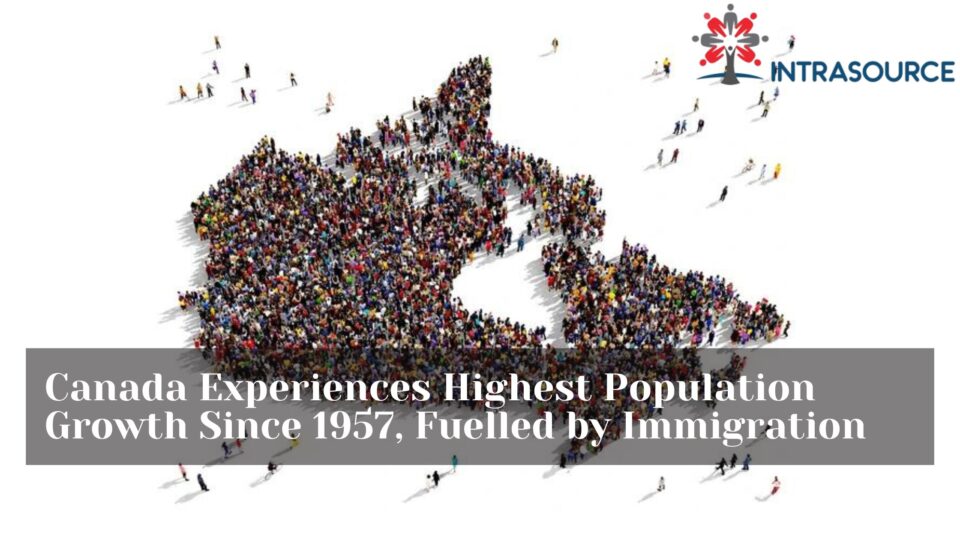Canada experiences a rise, in its population reaching its point since 1957. As per data, from Statistics Canada, the population of the country surged to 40,528,396 on October 1st 2023. This represents a growth of 430,635 individuals. Reflects a growth rate of 1.1% since July 1st 2023.
The remarkable increase, Canada Experiences in population can be attributed to people moving from countries to Canada, which has been a trend since the second quarter of 1957. At that time Canadas population was 16.7 million. The growth during that period was driven by the number of births after World War II and an influx of refugees following the Hungarian Revolution in 1956.
In years international migration has played a role in Canada Experiences population growth. In fact, during the quarter of 2023 an astonishing 96% of the growth came from people moving to Canada from other countries. The remaining 4% can be attributed to increases, which’s the difference, between births and deaths.
This factor is expected to become less important, over time due to the aging population of Canada and declining fertility rates, coupled with a number of immigrants coming into the country.
In the quarter of this year Canada received a total of 107,972 immigrants. Additionally between January and September 2023 immigration accounted for 80% (371,299) of the target set by Immigration, Refugees and Citizenship Canada (IRCC) for bringing in new arrivals (465,000 immigrants).
Recent Growth:
The growth in permanent residents also has a significant impact, on population growth figures. In the quarter there was a record-breaking net increase of 312,758 non-permanent residents—the highest quarterly gain since data started being recorded in 1971.
The significant increase, in numbers can be attributed to a rise in individuals holding work and study permits along with an upsurge, in those seeking refuge.
This population boom has not been confined to specific areas of the country—nearly all provinces and territories have experienced growth. In the third quarter, provinces such as Alberta (1.3%), Prince Edward Island (1.2%), and Ontario (1.2%) boasted population growth rates exceeding the national average.
Alberta managed to stand out by being the only province with net gains resulting from interprovincial migration; this marked the fifth consecutive quarter that gains exceeded 10,000.
Canada’s Ambitious Immigration Targets for 2024-2026: Economic Class and Key Programs Set to Grow
Canada recently announced its Immigration Levels Plan for the years 2024, to 2026. This plan outlines the number of residents that will be accepted into the country over a three year period in three main immigration categories; economic, family and humanitarian.
According to the plan Canada aims to welcome 485,000 immigrants in 2024. The target for each year both in 2025 and 2026 is set at 500,000 immigrants. The plan places emphasis on attracting immigrants under the class. In 2024 281,135 economic immigrants are expected to be admitted to Canada. This accounts for around 58% of the target. By 2026 this percentage is projected to increase to 60% with an estimated total of 301,250 immigrants.
Two significant programs contributing to these targets are Express Entry and Provincial Nominee Program (PNP). Under Express Entry admissions are expected to increase from 110,700 residents in 2024, to a consistent goal of admitting around117,500 immigrants annually in both20125 and20226. Similarly the PNP targets will rise from a figure of welcoming 11000 immigrants in 2024 to reaching a quota of 12000 for the subsequent years in both 2025 and 2026.
Conclusion
Canada’s extraordinary population growth is mainly fueled by international migration, with a significant contribution from non-permanent residents. It is evident that the government’s policies and target numbers regarding immigration have played a significant role in achieving these impressive results. The added populations in almost every province are likely to contribute to economic development and cultural growth across Canada while presenting new opportunities for residents at both a provincial and national level.


